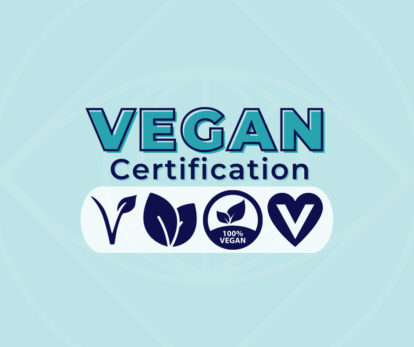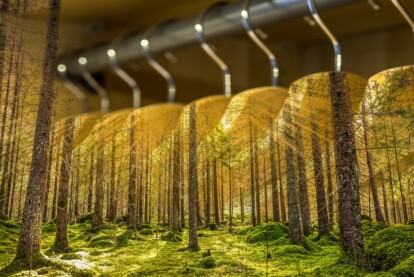What does vegan certification mean and is it necessary?


Fast fashion – described by Good on You as “cheap, trendy clothing that samples ideas from the catwalk or celebrity culture and turns them into garments in high street stores at breakneck speed to meet consumer demand” – results in 92 million tonnes of textile waste ending up in landfills every year.
But the impact of the fashion industry is about more than its waste products. It’s having a catastrophic effect on natural resources, climate change, health, communities and so much more.
In today’s blog, we’re taking a closer look at nine reasons we each need to choose sustainable and ethical fashion.
The average consumer now buys 60% more clothing than they did 15 years ago. Many of us have items in our wardrobes that have never been worn or only worn once or twice. In fact, research shows only 20% of clothes are worn regularly.
Globally, we buy about 56 million tonnes of clothing every year, while throwing away almost double that amount.
While nearly 100% of textiles and clothing are potentially recyclable, just 15% of clothes are ever recycled.
The natural resources that go into maintaining this turnover of fast fashion are extensive. Fossil fuels (mainly oil), water and land are three of the biggest casualties.
Sustainable fashion aims to use recycled materials and natural, organic fabrics.
As an example of how ethical fashion saves natural resources, every 10,000 tonnes of recycled nylon saves 70,000 barrels of crude oil, 57,100 tonnes of carbon emissions and reduces the impact of nylon production on global warming by up to 80%.
People often think of materials such as leather being by-products of the animal flesh industry, but this isn’t necessarily the case. Every year, billions of non-human animals are tortured and slaughtered for their skin, fur or feathers.
Some farmed species are even dismembered and skinned while alive, enduring unimaginable suffering before they die.
While some sustainable fashion brands still use animal-derived materials such as wool, a growing number of ethical brands are looking for sustainable and cruelty-free, vegan materials for their products.
Sustainable vegan textiles to look out for include:
– Organic cotton (non-organic cotton is associated with numerous health problems, including high suicide rates among cotton farmers)
– Lyocell and modal (these fabrics are manufactured from sustainable wood pulp – look for brands using modal from North American and Europe, as Chinese and Indonesian modal is still contributing to deforestation; Tencel and bamboo lyocell are good sustainable options)
– Linen (flax) – (look for European or Japanese linens, as Chinese linen still uses harmful chemicals)
– Hemp
– Pineapple, kombucha or cork leathers
You can find out more about some of the most sustainable materials here.
In 2020, the Intergovernmental Panel on Climate Change (IPCC) calculated that the fashion industry produces 10% of the world’s carbon dioxide emissions every year, making it the second-biggest industrial contributor to global warming after the oil industry.
According to figures from the United Nations Environment Programme (UNEP), the carbon footprint of a single pair of new jeans is equivalent to driving 111 kilometres or watching 246 hours of TV on a big screen (33.4kg of carbon emissions). This takes into account everything from cotton production and manufacture to transport and washing. It even takes 3,781 litres of water to make one pair of jeans (more about water in a moment).
Other clothes have a high carbon footprint because they’re made from petroleum-based materials such as polyester, acrylic and nylon, all of which require more energy to produce than natural or recycled fibres.
You can reduce your individual carbon footprint by choosing sustainable and ethical fashion brands that avoid chemical treatments, pesticides or fertilisers. They also use less water and energy.
Nearly 20% of the world’s wastewater is produced by the fashion industry, enough to fill 32 million Olympic-size swimming pools per year.
Despite a clear need for more sustainable and ethical fashion, it’s anticipated that water use by the fashion industry will increase by 50% by 2030. This could lead to a 40% shortfall between demand and supply within the same time period.
Due to the dyeing and finishing processes used in fast fashion and the amount of water needed to grow cotton in already water-scarce parts of the world, a single outfit consisting of jeans and a low-quality T-shirt requires more than 5,000 litres of water.
We add to the water wastage, as well as releasing micro-plastics into the water supply, every time we wash our fast-fashion items.
There is a very real risk that, as water becomes ever-more scarce, cotton-growing nations and the fashion industry will have to choose between cotton production and securing clean drinking water.
We can each help to reduce water wastage by refusing to buy from fast fashion brands, buying less and choosing sustainable items instead.
Organic cotton, for example, reduces water consumption by 91%. However, due to the costs involved for farmers, only 1% of the world’s current cotton production is organic.
If we send brands a clear message that we’re only prepared to buy sustainable fabrics, we may be able to cut water use and give farmers access to funding to grow organic crops.
Other fabrics that require little to no water during the production phase include linen, hemp and REFIBRATM.
Most of the clothes sold through the fast fashion industry are made in countries where workers have few, if any, rights.
Companies routinely pay “at least the legal minimum wage” but, in manufacturing countries such as China or Bangladesh, this could represent half to a fifth of the income that a family requires to fulfil its basic needs of food, accommodation, education and healthcare.
To achieve the turnaround times demanded by fast fashion, garment workers often work 16 hour days seven days a week. In many cases, they are not paid overtime or would be fired if they refuse to work longer shifts. A 96-hour working week is normal for a garment worker.
The working conditions in clothing factories are often appalling. Employees breathe in toxic substances with no ventilation inside an unsafe building where fires, injuries, accidents and disease are commonplace.
A human rights tribunal in 2012 found that workers routinely face verbal and physical abuse, including being denied breaks or water.
Anti-Slavery International report that forced labour is rife, especially in the cotton industry.
Every time we buy a fast fashion item, we are paying into a system that exploits humans and our animal kin.
Buying from ethical brands is a clear statement that the fashion industry needs to pay workers fairly and be transparent on wages and labour rights. The Vogue Business Index recently reported that this matters as much to consumers as environmental issues but that fashion brands are failing to address these concerns.
Truly sustainable and ethical fashion companies are committed to the health and safety of garment workers. Ethical Consumer has put together a more in-depth guide to the critical issues around workers’ rights.
Around 260 million children are in employment around the world, according to the International Labour Organisation. Of them, it’s estimated that 170 million are engaged in child labour, defined by the UN as “work for which the child is either too young – work done below the required minimum age – or work which, because of its detrimental nature or conditions, is altogether considered unacceptable for children and is prohibited”.
World Vision reports that forced and child labour is rife in the cotton industry. Children as young as five are forced to work in fields or factories with little to no pay and at the cost of their education.
They are exposed to harmful chemicals (see point 7), physical and sexual abuse, diseases and exhausting hours. Many end up trapped in a cycle of poverty.
Fashion brands that follow truly ethical practices should provide clear information about working conditions throughout the supply chain.
Look for certifications including Fair Wear Foundation, Certified B Corporation, Fair Trade Certified and Ethical Trading Initiative as these organisations have pledged to protect workers’ rights and ensure that child labour doesn’t take place before certifying a brand.
We saw in our recent blog about ethical skincare that micro-plastics are contributing to multiple global health crises. The fashion industry also adds micro-plastics into the world’s waterways and oceans.
In addition, thousands of synthetic chemicals are used in the dyeing, processing and finishing of garments. Many of them are highly toxic and restricted or banned from use in the EU (but not in some other parts of the world) because of the dangers they present to humans, other animal species and the environment.
Some of these chemicals cause serious birth defects, long-term health conditions and even death, especially among farmers.
Chemicals from fast fashion are also polluting our water; one-third of China’s rivers are now too polluted for direct human contact! That pollution seeps into the soil around it, affecting any species nearby.
Choosing to buy sustainable and ethical fashion is a powerful way to protect your own health, that of garment workers and, indeed, the health of all life on Earth.
Approximately 84% of all clothing ends up in landfills or being incinerated, and most textiles take around 200+ years to decompose. During the decomposition process, textiles generate greenhouse gas emissions and leach toxic chemicals into the groundwater and soil.
As we’ve already seen, many of these textiles have never been used or have only been worn once or twice before being seen as “old”. This is the influence of fast fashion.
Keeping our clothing out of landfills is arguably one of the most impactful ways that we can each help to slow down climate change and it’s something we can start to do immediately.
Look for fashion brands that are committed to recycling materials, as well as championing vintage clothes and natural, sustainable fabrics.
The average American spends $1,866 on clothes each year. In the UK that figure is £526.50. According to Forbes (and backed up by many of the stats we’ve already shared in this article), most of that money is spent on what turns out to be never-worn textile waste that goes from the shops to our wardrobes to rotting in a landfill without seeing the light of day.
Even when fast fashion items are worn, they’re not made to last so we’re encouraged to throw things away and buy the next new but disposable trend.
Clothes made by sustainable and ethical brands are made to last, which means investing in sustainable items could save you more money long-term than buying cheap fast fashion.
Anything that reduces the cost of living is beneficial.
Do you run or know of an ethical fashion brand that addresses the issues we’ve talked about in this article? Yes?! Then we’d love to add this business to our directory too.